|
Books Should Be Free Loyal Books Free Public Domain Audiobooks & eBook Downloads |
|
|
Books Should Be Free Loyal Books Free Public Domain Audiobooks & eBook Downloads |
|
Fiction |
|---|
|
Book type:
Sort by:
View by:
|
By: L. T. Meade (1854-1914) | |
|---|---|
 Good Luck
Good Luck
| |
 How It All Came Round
How It All Came Round
| |
 The Children of Wilton Chase
The Children of Wilton Chase
| |
By: Charles Norris Williamson (1859-1920) | |
|---|---|
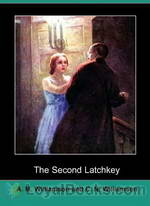 The Second Latchkey
The Second Latchkey
Jewelry thefts, society parties, clairvoyance, and romance marks this mystery, which is set in England and the US in the early 20th century. | |
 It Happened In Egypt
It Happened In Egypt
Lord Ernest Borrow and Captain Anthony Fenton think they know a secret – a secret that could make them both rich. En route, they are sidetracked by Sir Marcus Antonius Lark, a woman who thinks she’s Cleopatra reincarnate, a Gilded Rose of an American Heiress, and Mrs. Jones, a mysterious Irish woman with a past. Will they find the secret? Or will the trip up the Nile on the Enchantress Isis net them another discovery altogether? | |
By: Alfred J. Church (1829-1912) | |
|---|---|
 The Iliad for Boys and Girls
The Iliad for Boys and Girls
Echoing Homer’s epic poem The Iliad, Church offers a simplified rendering of the classic siege of Troy, as he retells the story which is regarded as one of the greatest masterpieces of Western literature. The Iliad for Boys and Girls is written in an easy to follow style that is certain to provide clarity to the otherwise perplexing tale presented in Homer’s original. Furthermore, the tale explores various themes including the destructive nature of pride, grueling revenge, honor, and the capricious interference of the Ancient Greek gods in temporal affairs... | |
By: Meredith Nicholson (1866-1947) | |
|---|---|
 The Port of Missing Men
The Port of Missing Men
Shirley Claiborne is fascinated by the tall handsome man named John Armitage who seemed to follow her and her brother, Captain Claiborne, as they traveled around Europe. Count von Stroebel had urged Armitage to do something for Austria. Now von Stroebel was dead – cut down by an assassin’s bullet – and Jules Chauvenet is one step closer to seeing the corrupt and worthless Francis ascend to the throne. When Shirley and Captain Claiborne sail for their home in Washington D.C., Armitage follows them. Monsieur Chauvenet also follows, but is he following Shirley or the mysterious John Armitage? And just who is John Armitage? (Introduction by MaryAnn) | |
 A Hoosier Chronicle
A Hoosier Chronicle
| |
 Blacksheep! Blacksheep!
Blacksheep! Blacksheep!
| |
 A Reversible Santa Claus
A Reversible Santa Claus
| |
 Otherwise Phyllis
Otherwise Phyllis
| |
 The Madness of May
The Madness of May
| |
 Lady Larkspur
Lady Larkspur
| |
By: Ella Wheeler Wilcox (1850-1919) | |
|---|---|
 Poems of Power
Poems of Power
This is a volume in a series of books of poetry by Ella Wheeler Wilcox. This time, the theme is "Power". | |
By: Sherwood Anderson (1876-1941) | |
|---|---|
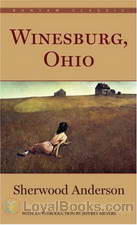 Winesburg, Ohio
Winesburg, Ohio
Anderson’s uniquely structured piece focuses on the lives of Winesburg’s most intriguing residents, as each shares a personal recount of their lives and experiences in the small town. The stories essentially intertwine to illustrate the development of George Willard, as he transforms from a heedless young man, to a man well aware of life’s trials and the extent of human misery. Exploring various themes including isolation, communication, limitation, and suffering, Winesburg, Ohio offers a glimpse into its characters heartfelt confessions... | |
By: Miss Mulock (1826-1887) | |
|---|---|
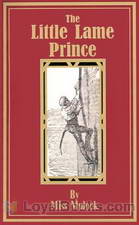 The Little Lame Prince
The Little Lame Prince
Paralyzed in an accident while a baby, young Prince Dolor is imprisoned in a lonely tower by his usurping uncle. He is visited by his mysterious godmother who provides him with magical gifts, including a traveling cloak that allows him to fly across the land. He uses his gifts to return to his rightful place on the throne. Also included are several short stories by the author also featuring princes. (Chapters 12-15) | |
 Adventures of a Brownie as Told to My Child
Adventures of a Brownie as Told to My Child
Adventures of a Brownie follows the life of a brownie who lives in a family’s coal cellar and the adventures he gets into with the members of the household. (Written by Ancilla) | |
By: Algernon Blackwood (1869-1951) | |
|---|---|
 The Willows
The Willows
A tale of horror in which a pleasant sojourn down the Danube tumbles terrifyingly awry as the veil between this world and an unfathomably weird dimension is inadvertently pierced by an innocent pair of vacationers, “The Willows”, arguably Algernon Blackwood’s seminal contribution to supernatural literature, has had a lasting influence on the field. No less a personage than H. P. Lovecraft describing it as “…the greatest weird tale ever written.” A reading will reveal a clear influence to one familiar with Lovecraft’s work... | |
 The Camp of the Dog
The Camp of the Dog
A party of campers on a deserted Baltic island is terrorized by a huge wolf… or is it? | |
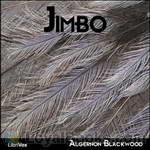 Jimbo
Jimbo
A supernatural fantasy about the mystical adventures of a lonely English boy named Jimbo–who can fly! It’s really quite beautiful and can be enjoyed by adults and teenagers alike. Be warned, however: The death of a beloved character and a creepy old house haunted by the wraith-like spirits of children makes some of this story far too scary for younger kids or indeed anyone of a sensitive disposition. Algernon Blackwood (1869-1951) was born in south London and wrote many tales of the supernatural. | |
 The Wendigo
The Wendigo
Another camper tale, this time set in the Canadian wilderness. A hunting party separates to track moose, and one member is abducted by the Wendigo of legend. Robert Aickman regarded this as "one of the (possibly) six great masterpieces in the field". | |
 The Man Whom the Trees Loved
The Man Whom the Trees Loved
The story of a man’s deep connection with nature and his wife’s fear of it. | |
 The Centaur
The Centaur
| |
 Four Weird Tales
Four Weird Tales
Four stories: The Insanity of Jones, The Man Who Found Out, The Glamour of the Snow, and Sand. Tales by one the greatest practitioners of supernatural literature. Reincarnation, the Occult, and mystery. | |
 John Silence
John Silence
Six stories about Dr. John Silence if you want the shivers to run up your back, this is the right place to be | |
By: Anne Austin (1895-??) | |
|---|---|
 Murder at Bridge
Murder at Bridge
Set in the affluent town of Hamilton, Austin’s classic presents a whodunit mystery focusing on a crime involving a young woman who has been murdered under mysterious circumstances during a game of Bridge, with no hard evidence pointing to the perpetrator. Accordingly, the townspeople are also affected by the mystery and they refuse to play the dummy in fear of sharing the same fate as the unfortunate victim. A gripping mystery crime novel, Murder at Bridge evokes feelings of suspense, awe, mystery and puts to the test the crime solving capabilities of the audience as they take up the role of detective... | |
By: Sir Thomas Malory | |
|---|---|
 Le Morte d'Arthur
Le Morte d'Arthur
Le Morte d’Arthur (spelled Le Morte Darthur in the first printing and also in some modern editions, Middle French for la mort d’Arthur, “the death of Arthur”) is Sir Thomas Malory’s compilation of some French and English Arthurian romances. The book contains some of Malory’s own original material (the Gareth story) and retells the older stories in light of Malory’s own views and interpretations. First published in 1485 by William Caxton, Le Morte d’Arthur is perhaps the best-known work of English-language Arthurian literature today. Many modern Arthurian writers have used Malory as their source, including T. H. White for his popular The Once and Future King. | |
By: Susan Coolidge (1835-1905) | |
|---|---|
 What Katy Did at School
What Katy Did at School
The continuing story of Katy Carr, recounting the time she spent at boarding school with her sister Clover. | |
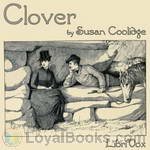 Clover
Clover
Clover is the fourth book in the popular What Katy Did series. After Katy's wedding, the focus shifts to her little sister Clover. Their brother Phil encounters serious illness in the winter, and Dr. Carr sends him with Clover to the mountains of Colorado. Clarence Page, their naughty cousin from the other books, lives nearby. He is a rancher now with an attractive English partner, Geoff Templestowe, whom Clover falls for.Other books in the series areWhat Katy DidWhat Katy Did at SchoolWhat Katy Did NextIn the High Valley | |
 In the High Valley
In the High Valley
In the High Valley” is the fifth and last book of the popular “What Katy did” series by Susan Coolidge.The story starts out with Lionel Young and his sister, Imogen who set out for the picturesque but remote High Valley (America), leaving their hometown Devonshire (England) behind.Lionel wants to take the share in Geoffrey Templestowe’s cattle business.Imogen, owing to her prejudices against America and the American way of life, finds it hard to adjust to life over there.Clover Templestowe, now happily married and living in the High Valley, at first finds it very trying to get on with Imogen... | |
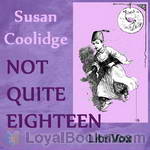 Not Quite Eighteen
Not Quite Eighteen
Not Quite Eighteen is a delightful collection of children’s stories that range from moral to whimsical. From unfinished fairy tales and daydreams about a pony who kept shop to a lesson on presence of mind, these anecdotes will entertain as well as improve the mind. ( | |
 Nine Little Goslings
Nine Little Goslings
| |
 Little Country Girl
Little Country Girl
Candace makes the first long trip of her young life alone. Everything is new, from the ocean views, to the fashionable people she encounters; from the museum-like home, to the unfamiliar cousins. How will she adapt to the new experiences and will she overcome the homesickness she feels? Will she adapt her country ways and enter society, or be an embarrassment to her fine relations? Etiquette and style can be learned; but kindness, common sense and a loving heart are inbred. | |
 Verses
Verses
Susan Coolidge was the pen name of Sarah Chauncey Woolsey, who is best known for her What Katy Did series. This is the first of three volumes of her verse. | |
 Eyebright
Eyebright
"Imagination is like a sail, as Mr. Joyce had said that evening; but sails are good and useful things sometimes, and carry their owners over deep waters and dark waves, which else might dampen, and drench, and drown." Twelve year old Isabella Bright is endowed with just such an imagination and spends her time amusing herself and her friends with stories. Will her imagination be called upon to help her navigate tempestuous seas? | |
By: George Manville Fenn (1831-1909) | |
|---|---|
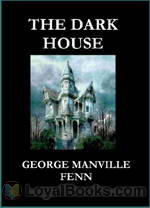 The Dark House
The Dark House
An extremely wealthy but reclusive man has died, leaving an eccentric will which hints at great riches hidden somewhere in the house. Most of the people at the reading of the will did not know the deceased in person, but had received kindnesses from him, for instance by the payment of school and university fees. The principal beneficiary, a great-nephew, also did not know him. The only two people who really knew him were the old lawyer who dealt with his affairs, and an old Indian servant. Yet when the will had been read, and they all went to where the treasure–gold, jewels and bank-notes–were supposed to be hidden, nothing could be found. | |
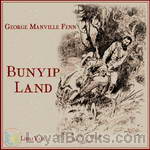 Bunyip Land
Bunyip Land
Joe Carstairs is a boy on a farm in Australia. His father is a keen naturalist who, some years before had set off for New Guinea in search of specimens, and never been heard of again. Joe is old enough to mount a search expedition, and takes with him a local doctor and an aboriginal worker on his farm. They find themselves joined by a stowaway, Jimmy, whose father is a squatter (farmer) nearby, together with his dog, Gyp.This team sets off, arrive in New Guinea, hire some more porters, and travel guided by some sixth sense straight to where Mr... | |
By: George Fenn (1831-1909) | |
|---|---|
 Young Robin Hood
Young Robin Hood
Ever wonder how Robin Hood became Robin Hood? Well, now you can read how a young boy was molded into the famous hero who "robbed from the rich and gave to the poor". This imaginative story gives zesty details into the development and growth of the famous Robin Hood | |